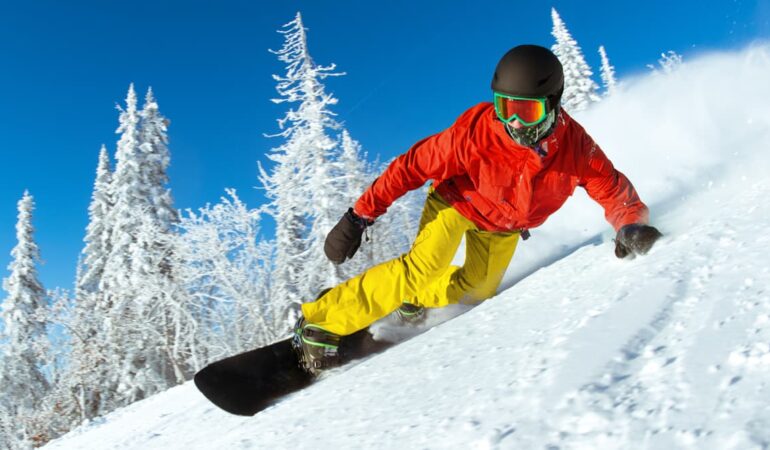Safety in Winter Sports: How to Avoid Injuries on Ice and Snow - Muirt-Rail John

Winter sports are not just about adrenaline and excitement — they also carry a high risk of injury, especially on ice and snow. Each season, hospitals report a surge in incidents related to falls, sprains, fractures, and hypothermia. To avoid unpleasant surprises and enjoy the activity, it is essential not only to choose the right gear but also to follow basic safety rules. This article explains how to minimize risks and prepare for winter fun in the Czech Republic.
Proper Equipment — The Foundation of Protection
Equipment is more than just clothing — it is the foundation of safety on the slopes or the rink. Even when sledding or walking through a snowy forest, it’s worth wearing sturdy shoes with anti-slip soles, waterproof outerwear, and gloves. Head protection is especially important: wearing a helmet while skiing, snowboarding, or even ice skating significantly reduces the risk of serious head trauma.
In the Czech Republic, helmets are mandatory for children at ski resorts and strongly recommended for adults. Modern helmets are light and comfortable, do not obstruct vision, and offer additional thermal insulation.
Skiing and Snowboarding: Focus on Technique and Weather
Czech ski resorts such as Špindlerův Mlýn or Klínovec offer slopes of various difficulty levels. However, regardless of the category of the slope, it’s essential to pay attention to skiing or snowboarding technique. The main mistake beginners make is overestimating their skills. Just because you can stand confidently on skis doesn’t mean you’re ready for a black slope.
It’s important to warm up your muscles in advance and do a short stretch before heading to the slope. Falls most commonly occur within the first 30 minutes of skiing or near the end of the session, when fatigue sets in. Skiing in poor visibility or strong wind increases the risk, so always check the weather forecast and choose the right time to descend.
Ice: A Hidden Danger Even When It Looks Solid
Skating on natural frozen bodies of water is popular among locals and tourists in the Czech Republic, especially on the outskirts of Prague or in South Moravia. However, this activity often leads to tragic accidents. Even when ice appears thick, its strength can vary.
Never go on the ice alone, and always check official information about skating safety. Ice should be at least 10–12 cm thick for one person and around 15 cm for a group. If you hear cracking sounds underfoot, return to shore immediately.
If you fall into icy water, every second counts. To increase your chances of survival, remain calm, avoid sudden movements, and try to roll out onto the ice on your stomach toward a more solid section. There should be rescue tools nearby: a rope, a pole, or a stick.
Child Safety During Winter Recreation
Children require special attention. They are more susceptible to hypothermia, tire faster, and tend to act impulsively. During winter holidays, adults must ensure children are dressed appropriately for the weather and not left in the cold for too long.
When learning to ski or snowboard, it is best to use the services of a professional instructor. Poor technique learned from the start not only diminishes the fun but can also lead to injury. Czech resorts offer dedicated children’s areas and slopes with soft barriers and safe lifts.
Preventing Hypothermia and Frostbite
Winter sports in the open air require close attention to temperature conditions. In sub-zero temperatures and wind, the body loses heat much faster than it seems. To avoid frostbite, cover exposed skin, especially ears, fingers, and the nose.
Early signs of hypothermia include shivering, numbness in the limbs, weakness, and slurred speech. If these symptoms appear, go to a warm place immediately and drink a hot beverage. Alcohol is not advised — it creates a false sense of warmth but actually speeds up heat loss.
Responsible Behavior on Slopes and Trails
Safety depends not only on you but also on other participants. Czech resorts follow behavior rules similar to traffic regulations. Yield to those lower on the slope, move at a controlled speed, and stop only in safe places — all of this should become a habit.
Using headphones while skiing can be dangerous — you might not hear signals from other skiers or instructors. Also, avoid filming videos while in motion, especially on busy sections of the slope.
Medical Insurance and Injury Assistance
Before going on a trip, arrange insurance that covers winter sports. In the Czech Republic, mountain rescue services are available and will provide professional assistance in case of an incident on the slope. However, without insurance, these services can be expensive.
If you get injured, do not panic or attempt to reach the base on your own if you suspect a fracture or dislocation. It’s better to wait for specialists who will ensure transportation without causing further harm.
Conclusion
Winter sports offer unforgettable experiences, improve health, and allow you to enjoy nature. But all of this is only possible if you follow basic safety rules. Choose trusted locations, monitor the weather, invest in quality gear, and take care of yourself and your loved ones. Then your winter holiday in the Czech Republic will leave only warm memories — despite the cold and snow.